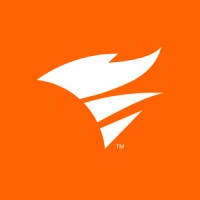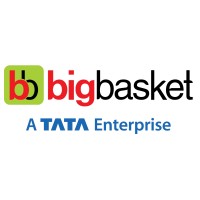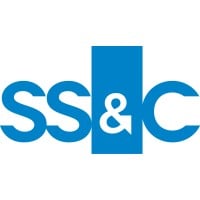
SolarWinds Company Cyber Security Posture
solarwinds.comMaking IT look easy.
SolarWinds Company Details
solarwinds
2693 employees
178508.0
511
Software Development
solarwinds.com
Scan still pending
SOL_1212343
In-progress
Between 900 and 1000
This score is AI-generated and less favored by cyber insurers, who prefer the TPRM score.
 SolarWinds Global Score
SolarWinds Global Score.png)

SolarWinds Company Scoring based on AI Models
| Model Name | Date | Description | Current Score Difference | Score |
|---|---|---|---|---|
| AVERAGE-Industry | 03-12-2025 | This score represents the average cybersecurity rating of companies already scanned within the same industry. It provides a benchmark to compare an individual company's security posture against its industry peers. | N/A | Between 900 and 1000 |
SolarWinds Company Cyber Security News & History
| Entity | Type | Severity | Impact | Seen | Url ID | Details | View |
|---|---|---|---|---|---|---|---|
| SolarWinds | Breach | 100 | 5 | 12/2020 | SOL102050724 | Link | |
Rankiteo Explanation : Attack threatening the organization’s existenceDescription: The SolarWinds cyber attack, attributed to Russian state-sponsored actors, represents one of the most significant and sophisticated cybersecurity breaches against the global IT supply chain. The attack involved the compromise of the SolarWinds Orion software update mechanism, which was then used to deploy a malicious update to as many as 18,000 SolarWinds customers. This breach allowed the attackers to conduct espionage and potentially disrupt network operations across numerous U.S. federal agencies, critical infrastructure entities, and private sector organizations. The severity of this incident lies not only in the scale and depth of the intrusion but also in the stealth and sophistication with which the attackers operated, going undetected for several months. The SolarWinds breach underscores the high level of vulnerability in global IT supply chains and the critical need for enhanced cybersecurity vigilance and defense measures. | |||||||
| SolarWinds | Breach | 100 | 5 | 3/2025 | SOL527030325 | Link | |
Rankiteo Explanation : Attack threatening the organization’s existenceDescription: SolarWinds faced a significant cybersecurity incident involving the exploitation of its Orion software, leading to the compromise of numerous corporate systems. This breach had far-reaching implications, attracting the attention of the Securities and Exchange Commission, which resulted in legal allegations against the firm and its CISO for providing misleading statements post-incident. The event has raised concerns among security executives about the legal ramifications of their response actions in the wake of cybersecurity breaches. | |||||||
| SolarWinds | Cyber Attack | 100 | 5 | 12/2020 | SOL501050624 | Link | |
Rankiteo Explanation : Attack threatening the organization’s existenceDescription: In a highly sophisticated and targeted cyber espionage campaign, SolarWinds, a leading provider of IT management software, became the victim of a massive cyberattack disclosed in December 2020. This attack was orchestrated by allegedly state-sponsored hackers who managed to compromise the company's Orion software by inserting a malicious code into its updates. This backdoor, known as Sunburst, allowed the attackers unprecedented access to the networks of thousands of SolarWinds' clients, including top government agencies in the United States and numerous Fortune 500 companies. The breach's scale and the sensitivity of the data potentially accessed put at risk not only the financial assets and reputation of SolarWinds and its clients but also posed a significant threat to national security. The attackers demonstrated deep technical sophistication, enabling them to stay undetected for several months while conducting espionage and potentially extracting sensitive information. | |||||||
| SolarWinds | Cyber Attack | 100 | 5 | 05/2022 | SOL201050824 | Link | |
Rankiteo Explanation : Attack threatening the organization’s existenceDescription: The SolarWinds cyber attack, identified in December 2020, stands as one of the most significant and widespread cybersecurity breaches involving a supply chain attack vector. Russian Foreign Intelligence Service (SVR) operatives executed this meticulously planned operation, subtly compromising the software development process of SolarWinds' Orion Platform. By inserting a malicious code into the software updates, the attackers managed to infiltrate the networks of approximately 18,000 SolarWinds customers, including U.S. federal agencies, critical infrastructure entities, and numerous private sector organizations globally. The severity of this breach lies not only in the scale and high-profile nature of the targeted entities but also in the potential access gained to sensitive information and the compromise of national security interests. The attackers demonstrated advanced capabilities, staying undetected for months while accessing sensitive data. This incident highlighted the vulnerabilities in the supply chain and the significant impact such breaches can have on national security, corporate governance, and consumer trust. | |||||||
| SolarWinds | Ransomware | 100 | 5 | 12/2020 | SOL802050124 | Link | |
Rankiteo Explanation : Attack threatening the organization’s existenceDescription: The SolarWinds cyberattack, discovered in December 2020, significantly impacted numerous organizations globally, including U.S. federal agencies and Fortune 500 companies. This sophisticated supply chain attack was orchestrated by inserting malicious code into the SolarWinds Orion software updates. This breach allowed the threat actors, believed to be state-sponsored, to conduct espionage and exfiltrate data over several months unnoticed. The severity of this attack lies not only in its scale and the sensitivity of the data compromised but also in the profound breach of trust in a widely used network management tool. The attackers had access to sensitive communications, intellectual property, and potentially could have manipulated critical systems, highlighting the significant vulnerabilities in the software supply chain. This incident serves as a stark reminder of the need for stringent cybersecurity measures and rigorous vetting processes for software used within government and corporate environments. | |||||||
| SolarWinds | Ransomware | 100 | 5 | 04/2021 | SOL802050624 | Link | |
Rankiteo Explanation : Attack threatening the organization’s existenceDescription: The SolarWinds cyber attack, attributed to Russian state-sponsored actors, created a significant breach involving the Orion software platform. This attack compromised several US government agencies, critical infrastructure entities, and private sector organizations. By injecting malicious code into Orion's software updates, the attackers could perform espionage, data theft, and potentially disrupt operations. This sophisticated supply chain attack highlighted the vulnerabilities in the software development and distribution processes. The implications of the breach include the exposure of sensitive governmental communications, potential access to critical infrastructure systems, and the erosion of trust in a widely used IT management tool. The severity and impact of the attack underscore the challenges of securing complex IT ecosystems against state-sponsored cyber threats. | |||||||
| SolarWinds | Vulnerability | 60 | 3 | 02/2021 | SOL22751222 | Link | |
Rankiteo Explanation : Attack with significant impact with internal employee data leaksDescription: Several U.S. government agencies and large organizations were hit by cyberattacks due to a vulnerability in IT infrastructure provider – SolarWinds. Many government agencies and Fortune 500 companies use SolarWinds, which contributed to the severity of the attack. Organizations were forced to continue working with it despite knowing that a breach had occurred. The attack resulted from a weak password that an intern had used – “solarwinds123”. The attack affected thousands of SolarWinds’ clients, causing billions in damages. | |||||||
| SolarWinds | Vulnerability | 100 | 5 | 12/2020 | SOL327050424 | Link | |
Rankiteo Explanation : Attack threatening the organization’s existenceDescription: The SolarWinds cyberattack, discovered in December 2020, was a highly sophisticated and targeted espionage operation. It compromised the software development process of SolarWinds, a major US company that provides software for monitoring and managing network infrastructure. The attackers managed to insert a malicious code into SolarWinds' Orion software updates, allowing them to potentially access the networks of thousands of SolarWinds' customers, including numerous US government agencies and Fortune 500 companies. This led to a significant breach of sensitive information and put national security at risk. The attack is notable for its scale, sophistication, and the high profile of the targeted entities. It highlighted the vulnerability of supply chain attacks and raised serious concerns about cybersecurity practices and national defense. The repercussions of the attack are far-reaching, prompting a reevaluation of cybersecurity policies and measures across the private and public sectors. | |||||||
| SolarWinds | Vulnerability | 100 | 8 | 04/2022 | SOL708050624 | Link | |
Rankiteo Explanation : Attack that could bring to a warDescription: The SolarWinds cyberattack, attributed to Russian Foreign Intelligence Service (SVR) APT group, represents one of the most significant and sophisticated cybersecurity breaches. This campaign exploited the SolarWinds Orion software, through which the attackers inserted malicious code into the software's updates sent to thousands of customers. The breach enabled extensive surveillance and data exfiltration capabilities, impacting numerous high-profile organizations globally, including US government agencies and major corporations. The attackers gained access to sensitive information, including national security data, intellectual property, and enterprise secrets. The severity of the attack lies in its scope, the level of access obtained, and the duration of unnoticed activities, highlighting critical vulnerabilities in the supply chain security and the challenges in defending against state-sponsored cyber operations. | |||||||
| SolarWinds | Vulnerability | 100 | 5 | 04/2021 | SOL1016050824 | Link | |
Rankiteo Explanation : Attack threatening the organization’s existenceDescription: The SolarWinds cyber attack, attributed to Russian Foreign Intelligence Service (SVR) operatives, represented a sophisticated and long-undetected espionage campaign that compromised the SolarWinds Orion software. This breach, one of the most consequential to date, allowed hackers to infiltrate the networks of thousands of SolarWinds customers, including U.S. government agencies and numerous private sector organizations. The attackers exploited the supply chain vulnerability to insert malicious code into the company's software system. The breach was significant not just for the scale and sensitivity of the information accessed but also for the depth of access the attackers achieved into the networks of critical infrastructure entities, leading to concerns over national security and the integrity of critical IT infrastructure. The attackers' ability to remain undetected for months underscored the sophisticated nature of the operation and the challenge of defending against state-sponsored cyber espionage. | |||||||
| SolarWinds | Vulnerability | 85 | 4 | 3/2025 | SOL409031225 | Link | |
Rankiteo Explanation : Attack with significant impact with customers data leaksDescription: SolarWinds faced a critical vulnerability in their Web Help Desk software, identified as CVE-2024-28989, which allowed attackers to decrypt stored credentials due to cryptographic weaknesses in the AES-GCM implementation. Though patched in version 12.8.5, the flaw was critical because it stemmed from the use of predictable encryption keys and nonce reuse, potentially leading to the decryption of sensitive information such as database passwords and LDAP/SMTP authentication secrets. This vulnerability was addressed quickly by SolarWinds, but highlighted the importance of robust cryptographic practices. | |||||||
SolarWinds Company Subsidiaries

Making IT look easy.
Access Data Using Our API

Get company history
.png)
SolarWinds Cyber Security News
Private equity firm to acquire SolarWinds for $4.4B
SolarWinds, which now will go private, was embroiled in a massive supply chain attack in 2020 linked to Russia-backed threat actors.
SolarWinds security chief on the risks and rewards of being a CISO
As the chief information security officer of SolarWinds, Tim Brown had a front-row view of the company's 2020 Sunburst incident — where the ...
SolarWinds CISO says security execs are ‘nervous’ about individual liability for data breaches
SolarWinds was sued by shareholders alleging cybersecurity negligence and insider trading related to the hack, while a Securities and Exchange ...
Undeterred by the SolarWinds Storm: SEC Charges Victims of Compromised Software
The SEC on Oct. 22, 2024, announced charges against four companies for allegedly making materially misleading disclosures concerning the ...
Solarwinds CISO Wants Global Cyber Laws After Winning Case
Solarwinds CISO Tim Brown, after beating charges from the SEC case against him, is calling for governments across the globe to create cyber ...
Cybersecurity M&A Roundup: SolarWinds Acquired for $4.4bn
SolarWinds announced the completion of its acquisition by Turn/River Capital on February 7 for a total enterprise value of $4.4bn. The company's ...
SolarWinds to Go Private for $4.4B
SolarWinds will become a privately held company, no longer listed on the New York Stock Exchange, though it will continue to operate under the ...
8 Million Requests Later, We Made The SolarWinds Supply Chain Attack Look Amateur
We decided to prove out the scenario of a significant Internet-wide supply chain attack caused by abandoned infrastructure.
Judge Rejects SEC’s Aggressive Approach to Cybersecurity Enforcement
The SEC alleged that SolarWinds and Brown defrauded investors by overstating the Company's cybersecurity practices and understating or failing ...

SolarWinds Similar Companies

Baidu, Inc.
Baidu is a leading AI company with strong Internet foundation, driven by our mission to “make the complicated world simpler through technology”. Founded in 2000 as a search engine platform, we were an early adopter of artificial intelligence in 2010. Since then, we have established a full AI stack,

Airbnb
Airbnb was born in 2007 when two Hosts welcomed three guests to their San Francisco home, and has since grown to over 5 million Hosts who have welcomed over 1.5 billion guest arrivals in almost every country across the globe. Every day, Hosts offer unique stays and experiences that make it possible

UKG
At UKG, our purpose is people. As strong believers in the power of culture and belonging as the secret to success, we champion great workplaces and build lifelong partnerships with our customers to show what’s possible when businesses invest in their people. One of the world’s leading HCM cloud comp

PayPal
We're championing possibilities for all by making money fast, easy, and more enjoyable. Our hope is to unlock opportunities for people in their everyday lives and empower the millions of people and businesses around the world who trust, rely upon, and use PayPal every day. For support, visit the P

bigbasket
Starting our journey in 2011, today, bigbasket - a Tata Enterprise is India’s largest online supermarket with over 13 million customers and a presence in 60+ cities & towns. With our presence spanning the entire spectrum of consumer needs, we operate through a range of business lines - bigbasket, bb

SS&C Technologies
SS&C is a leading global provider of mission-critical, cloud-based software and solutions for the financial and healthcare industries. Named to the Fortune 1000 list as a top U.S. company based on revenue, SS&C (NASDAQ: SSNC) is a trusted provider to more than 20,000 financial services and healthcar

Frequently Asked Questions (FAQ) on Cybersecurity Incidents
SolarWinds CyberSecurity History Information
Total Incidents: According to Rankiteo, SolarWinds has faced 11 incidents in the past.
Incident Types: The types of cybersecurity incidents that have occurred include ['Vulnerability', 'Cyber Attack', 'Ransomware', 'Breach'].
Total Financial Loss: The total financial loss from these incidents is estimated to be {total_financial_loss}.
Cybersecurity Posture: The company's overall cybersecurity posture is described as Making IT look easy..
Detection and Response: The company detects and responds to cybersecurity incidents through {description_of_detection_and_response_process}.
Incident Details
Incident 1: Ransomware Attack
Title: {Incident_Title}
Description: {Brief_description_of_the_incident}
Date Detected: {Detection_Date}
Date Publicly Disclosed: {Disclosure_Date}
Date Resolved: {Resolution_Date}
Type: {Type_of_Attack}
Attack Vector: {Attack_Vector}
Vulnerability Exploited: {Vulnerability}
Threat Actor: {Threat_Actor}
Motivation: {Motivation}
Incident 2: Data Breach
Title: {Incident_Title}
Description: {Brief_description_of_the_incident}
Date Detected: {Detection_Date}
Date Publicly Disclosed: {Disclosure_Date}
Date Resolved: {Resolution_Date}
Type: {Type_of_Attack}
Attack Vector: {Attack_Vector}
Vulnerability Exploited: {Vulnerability}
Threat Actor: {Threat_Actor}
Motivation: {Motivation}
Common Attack Types: The most common types of attacks the company has faced are ['Breach', 'Cyber Attack', 'Ransomware', 'Vulnerability'].
Identification of Attack Vectors: The company identifies the attack vectors used in incidents through {description_of_identification_process}.
Impact of the Incidents
Incident 1: Ransomware Attack
Financial Loss: {Financial_Loss}
Data Compromised: {Data_Compromised}
Systems Affected: {Systems_Affected}
Downtime: {Downtime}
Operational Impact: {Operational_Impact}
Conversion Rate Impact: {Conversion_Rate_Impact}
Revenue Loss: {Revenue_Loss}
Customer Complaints: {Customer_Complaints}
Brand Reputation Impact: {Brand_Reputation_Impact}
Legal Liabilities: {Legal_Liabilities}
Identity Theft Risk: {Identity_Theft_Risk}
Payment Information Risk: {Payment_Information_Risk}
Incident 2: Data Breach
Financial Loss: {Financial_Loss}
Data Compromised: {Data_Compromised}
Systems Affected: {Systems_Affected}
Downtime: {Downtime}
Operational Impact: {Operational_Impact}
Conversion Rate Impact: {Conversion_Rate_Impact}
Revenue Loss: {Revenue_Loss}
Customer Complaints: {Customer_Complaints}
Brand Reputation Impact: {Brand_Reputation_Impact}
Legal Liabilities: {Legal_Liabilities}
Identity Theft Risk: {Identity_Theft_Risk}
Payment Information Risk: {Payment_Information_Risk}
Average Financial Loss: The average financial loss per incident is {average_financial_loss}.
Commonly Compromised Data Types: The types of data most commonly compromised in incidents are {list_of_commonly_compromised_data_types}.
Incident 1: Ransomware Attack
Entity Name: {Entity_Name}
Entity Type: {Entity_Type}
Industry: {Industry}
Location: {Location}
Size: {Size}
Customers Affected: {Customers_Affected}
Incident 2: Data Breach
Entity Name: {Entity_Name}
Entity Type: {Entity_Type}
Industry: {Industry}
Location: {Location}
Size: {Size}
Customers Affected: {Customers_Affected}
Response to the Incidents
Incident 1: Ransomware Attack
Incident Response Plan Activated: {Yes/No}
Third Party Assistance: {Yes/No}
Law Enforcement Notified: {Yes/No}
Containment Measures: {Containment_Measures}
Remediation Measures: {Remediation_Measures}
Recovery Measures: {Recovery_Measures}
Communication Strategy: {Communication_Strategy}
Adaptive Behavioral WAF: {Adaptive_Behavioral_WAF}
On-Demand Scrubbing Services: {On_Demand_Scrubbing_Services}
Network Segmentation: {Network_Segmentation}
Enhanced Monitoring: {Enhanced_Monitoring}
Incident 2: Data Breach
Incident Response Plan Activated: {Yes/No}
Third Party Assistance: {Yes/No}
Law Enforcement Notified: {Yes/No}
Containment Measures: {Containment_Measures}
Remediation Measures: {Remediation_Measures}
Recovery Measures: {Recovery_Measures}
Communication Strategy: {Communication_Strategy}
Adaptive Behavioral WAF: {Adaptive_Behavioral_WAF}
On-Demand Scrubbing Services: {On_Demand_Scrubbing_Services}
Network Segmentation: {Network_Segmentation}
Enhanced Monitoring: {Enhanced_Monitoring}
Incident Response Plan: The company's incident response plan is described as {description_of_incident_response_plan}.
Third-Party Assistance: The company involves third-party assistance in incident response through {description_of_third_party_involvement}.
Data Breach Information
Incident 2: Data Breach
Type of Data Compromised: {Type_of_Data}
Number of Records Exposed: {Number_of_Records}
Sensitivity of Data: {Sensitivity_of_Data}
Data Exfiltration: {Yes/No}
Data Encryption: {Yes/No}
File Types Exposed: {File_Types}
Personally Identifiable Information: {Yes/No}
Prevention of Data Exfiltration: The company takes the following measures to prevent data exfiltration: {description_of_prevention_measures}.
Handling of PII Incidents: The company handles incidents involving personally identifiable information (PII) through {description_of_handling_process}.
Ransomware Information
Incident 1: Ransomware Attack
Ransom Demanded: {Ransom_Amount}
Ransom Paid: {Ransom_Paid}
Ransomware Strain: {Ransomware_Strain}
Data Encryption: {Yes/No}
Data Exfiltration: {Yes/No}
Ransom Payment Policy: The company's policy on paying ransoms in ransomware incidents is described as {description_of_ransom_payment_policy}.
Data Recovery from Ransomware: The company recovers data encrypted by ransomware through {description_of_data_recovery_process}.
Regulatory Compliance
Incident 1: Ransomware Attack
Regulations Violated: {Regulations_Violated}
Fines Imposed: {Fines_Imposed}
Legal Actions: {Legal_Actions}
Regulatory Notifications: {Regulatory_Notifications}
Incident 2: Data Breach
Regulations Violated: {Regulations_Violated}
Fines Imposed: {Fines_Imposed}
Legal Actions: {Legal_Actions}
Regulatory Notifications: {Regulatory_Notifications}
Regulatory Frameworks: The company complies with the following regulatory frameworks regarding cybersecurity: {list_of_regulatory_frameworks}.
Ensuring Regulatory Compliance: The company ensures compliance with regulatory requirements through {description_of_compliance_measures}.
Lessons Learned and Recommendations
Incident 1: Ransomware Attack
Lessons Learned: {Lessons_Learned}
Incident 2: Data Breach
Lessons Learned: {Lessons_Learned}
Incident 1: Ransomware Attack
Recommendations: {Recommendations}
Incident 2: Data Breach
Recommendations: {Recommendations}
Key Lessons Learned: The key lessons learned from past incidents are {list_of_key_lessons_learned}.
Implemented Recommendations: The company has implemented the following recommendations to improve cybersecurity: {list_of_implemented_recommendations}.
References
Additional Resources: Stakeholders can find additional resources on cybersecurity best practices at {list_of_additional_resources}.
Investigation Status
Incident 1: Ransomware Attack
Investigation Status: {Investigation_Status}
Incident 2: Data Breach
Investigation Status: {Investigation_Status}
Communication of Investigation Status: The company communicates the status of incident investigations to stakeholders through {description_of_communication_process}.
Stakeholder and Customer Advisories
Incident 1: Ransomware Attack
Stakeholder Advisories: {Stakeholder_Advisories}
Customer Advisories: {Customer_Advisories}
Incident 2: Data Breach
Stakeholder Advisories: {Stakeholder_Advisories}
Customer Advisories: {Customer_Advisories}
Advisories Provided: The company provides the following advisories to stakeholders and customers following an incident: {description_of_advisories_provided}.
Initial Access Broker
Incident 1: Ransomware Attack
Entry Point: {Entry_Point}
Reconnaissance Period: {Reconnaissance_Period}
Backdoors Established: {Backdoors_Established}
High Value Targets: {High_Value_Targets}
Data Sold on Dark Web: {Yes/No}
Incident 2: Data Breach
Entry Point: {Entry_Point}
Reconnaissance Period: {Reconnaissance_Period}
Backdoors Established: {Backdoors_Established}
High Value Targets: {High_Value_Targets}
Data Sold on Dark Web: {Yes/No}
Monitoring and Mitigation of Initial Access Brokers: The company monitors and mitigates the activities of initial access brokers through {description_of_monitoring_and_mitigation_measures}.
Post-Incident Analysis
Incident 1: Ransomware Attack
Root Causes: {Root_Causes}
Corrective Actions: {Corrective_Actions}
Incident 2: Data Breach
Root Causes: {Root_Causes}
Corrective Actions: {Corrective_Actions}
Post-Incident Analysis Process: The company's process for conducting post-incident analysis is described as {description_of_post_incident_analysis_process}.
Corrective Actions Taken: The company has taken the following corrective actions based on post-incident analysis: {list_of_corrective_actions_taken}.
Additional Questions
General Information
Ransom Payment History: The company has {paid/not_paid} ransoms in the past.
Last Ransom Demanded: The amount of the last ransom demanded was {last_ransom_amount}.
Last Attacking Group: The attacking group in the last incident was {last_attacking_group}.
Incident Details
Most Recent Incident Detected: The most recent incident detected was on {most_recent_incident_detected_date}.
Most Recent Incident Publicly Disclosed: The most recent incident publicly disclosed was on {most_recent_incident_publicly_disclosed_date}.
Most Recent Incident Resolved: The most recent incident resolved was on {most_recent_incident_resolved_date}.
Impact of the Incidents
Highest Financial Loss: The highest financial loss from an incident was {highest_financial_loss}.
Most Significant Data Compromised: The most significant data compromised in an incident was {most_significant_data_compromised}.
Most Significant System Affected: The most significant system affected in an incident was {most_significant_system_affected}.
Response to the Incidents
Third-Party Assistance in Most Recent Incident: The third-party assistance involved in the most recent incident was {third_party_assistance_in_most_recent_incident}.
Containment Measures in Most Recent Incident: The containment measures taken in the most recent incident were {containment_measures_in_most_recent_incident}.
Data Breach Information
Most Sensitive Data Compromised: The most sensitive data compromised in a breach was {most_sensitive_data_compromised}.
Number of Records Exposed: The number of records exposed in the most significant breach was {number_of_records_exposed}.
Ransomware Information
Highest Ransom Demanded: The highest ransom demanded in a ransomware incident was {highest_ransom_demanded}.
Highest Ransom Paid: The highest ransom paid in a ransomware incident was {highest_ransom_paid}.
Regulatory Compliance
Highest Fine Imposed: The highest fine imposed for a regulatory violation was {highest_fine_imposed}.
Most Significant Legal Action: The most significant legal action taken for a regulatory violation was {most_significant_legal_action}.
Lessons Learned and Recommendations
Most Significant Lesson Learned: The most significant lesson learned from past incidents was {most_significant_lesson_learned}.
Most Significant Recommendation Implemented: The most significant recommendation implemented to improve cybersecurity was {most_significant_recommendation_implemented}.
References
Most Recent Source: The most recent source of information about an incident is {most_recent_source}.
Most Recent URL for Additional Resources: The most recent URL for additional resources on cybersecurity best practices is {most_recent_url}.
Investigation Status
Current Status of Most Recent Investigation: The current status of the most recent investigation is {current_status_of_most_recent_investigation}.
Stakeholder and Customer Advisories
Most Recent Stakeholder Advisory: The most recent stakeholder advisory issued was {most_recent_stakeholder_advisory}.
Most Recent Customer Advisory: The most recent customer advisory issued was {most_recent_customer_advisory}.
Initial Access Broker
Most Recent Entry Point: The most recent entry point used by an initial access broker was {most_recent_entry_point}.
Most Recent Reconnaissance Period: The most recent reconnaissance period for an incident was {most_recent_reconnaissance_period}.
Post-Incident Analysis
Most Significant Root Cause: The most significant root cause identified in post-incident analysis was {most_significant_root_cause}.
Most Significant Corrective Action: The most significant corrective action taken based on post-incident analysis was {most_significant_corrective_action}.
What Do We Measure?
















Every week, Rankiteo analyzes billions of signals to give organizations a sharper, faster view of emerging risks. With deeper, more actionable intelligence at their fingertips, security teams can outpace threat actors, respond instantly to Zero-Day attacks, and dramatically shrink their risk exposure window.
These are some of the factors we use to calculate the overall score:
Identify exposed access points, detect misconfigured SSL certificates, and uncover vulnerabilities across the network infrastructure.
Gain visibility into the software components used within an organization to detect vulnerabilities, manage risk, and ensure supply chain security.
Monitor and manage all IT assets and their configurations to ensure accurate, real-time visibility across the company's technology environment.
Leverage real-time insights on active threats, malware campaigns, and emerging vulnerabilities to proactively defend against evolving cyberattacks.




